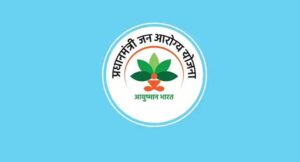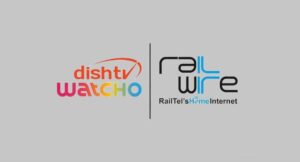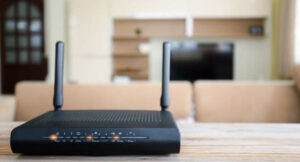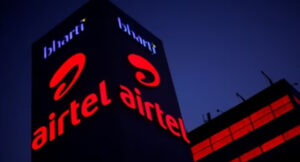The global market for portable medical devices is anticipated to record a CAGR of 9.8% during the 2024-2030 analysis period and stand at a projected USD 127 billion by 2030 from an estimated USD 72.5 billion in 2024.
This global report on Portable Medical Devices analyzes the market based on product, application, and end-users. In addition to providing profiles of major companies operating in this space, the latest corporate and industrial developments have been covered to offer a clear panorama of how and where the market is progressing.
Many of these devices can connect with smartphones and other mobile gadgets, enhancing remote patient monitoring functions. This integration supports proactive health management and contributes to reducing the need for hospitalizations and associated healthcare expenses. The importance of portable medical devices is especially evident during global health emergencies, as they relieve pressure on healthcare systems by enabling efficient remote monitoring and care.
The portable medical devices market is primarily driven by the growing incidence of chronic illnesses that require effective management solutions. These conditions require continuous monitoring and treatment, leading to a strong demand for portable devices that enable individuals to track and manage their health in real-time from home. The increasing adoption of advanced wearable devices also significantly boosts market growth. These devices, such as smartwatches and health monitors, offer improved data accuracy and enhance patient engagement, making health monitoring easier and more convenient.
Moreover, the rising emphasis on home healthcare solutions, fueled by an aging population and demographic shifts, fosters the need for portable devices that facilitate remote monitoring. Technological advancements, especially the integration of artificial intelligence (AI) and the Internet of Things (IoT), have further improved the functionality and efficiency of these devices. Additionally, government initiatives promoting preventive healthcare and enhancing access to health monitoring solutions aid market expansion.
Portable medical devices regional market analysis
North America leads the global market for portable medical devices, capturing 40.4% market share in 2024 due to its advanced healthcare systems, high consumer demand, and an increasing occurrence of chronic illnesses. The increasing elderly population and the rise in telehealth usage, supportive regulatory and reimbursement frameworks further contribute to market expansion.
In contrast, the Asia-Pacific region is expected to witness rapid growth with a CAGR of 11.2% during the forecast period 2024-2030, driven by an increasing geriatric population, rising disposable incomes, and growing health awareness, especially in emerging countries such as China and India. The focus on local production and innovation in cost-effective portable medical devices boosts market dynamics in this region, positioning it as the fastest-growing segment worldwide.
Portable medical devices market analysis by product
The portable medical devices market is segmented into monitoring devices, diagnostic imaging devices, therapeutic devices, and smart wearable medical devices. Among these, the monitoring devices segment is the largest, holding an estimated 48.5% share in 2024. This dominance is driven by increased adoption, regulatory approvals, and technological advancements that enhance portability and compactness.
An aging population and rising prevalence of chronic diseases, which increase the demand for continuous health monitoring, support this segment’s leading position. Conversely, the smart wearable medical devices segment is projected to record the fastest CAGR of 12.2% from 2024 to 2030, spurred by growing consumer interest in fitness and health-tracking solutions. Increasing health awareness, a focus on preventive care, and advanced, innovative devices that meet consumer demand are boosting this growth.
Portable medical devices market analysis by application
The market for portable medical devices is segmented into cardiology, gynecology, orthopedics, gastrointestinal, respiratory, urology, neurology, and other applications. The cardiology application is expected to hold the largest market share at 29.8% in 2024, fueled by technological advancements that improve the diagnosis and management of heart conditions.
Medical devices like Holter monitors and ECG machines enable remote monitoring, particularly for elderly people needing ongoing heart health management. The increasing prevalence of obesity and health problems related to lifestyle further strengthens the need for continuous cardiac monitoring, as cardiovascular diseases remain a leading cause of illness and death.
Conversely, the gynecology application is projected to experience significant growth with a CAGR of 11.4% during the analysis period 2024-2030, driven by the rising adoption of imaging technologies and portable monitoring solutions. The rising incidence of gynecological issues and a higher rate of births contribute to the increasing necessity for advanced portable devices in this field, boosting improved outcomes and lowering the rates of congenital abnormalities.
Portable medical devices market analysis by end-user
The portable medical devices market is segmented into hospitals and clinics, physicians’ offices, home care settings, and other end-users. The hospitals and clinics end-user segment led the market cornering with an estimated share of 45.7% in 2024, driven by the increased accessibility and flexibility of portable medical devices. These devices reduce issues such as crowded hospital environments and staffing shortages by streamlining workflows, facilitating point-of-care diagnostics, and supporting mobile monitoring, which aids in discharging patients sooner.
Conversely, the homecare segment is anticipated to record the fastest CAGR of 11% during the forecast period as healthcare systems focus more on home-based care. Portable medical devices like glucometers and blood pressure monitors enable patients with chronic conditions to manage their health easily, resulting in better health outcomes and reduced regular hospital visits. Research and Markets









